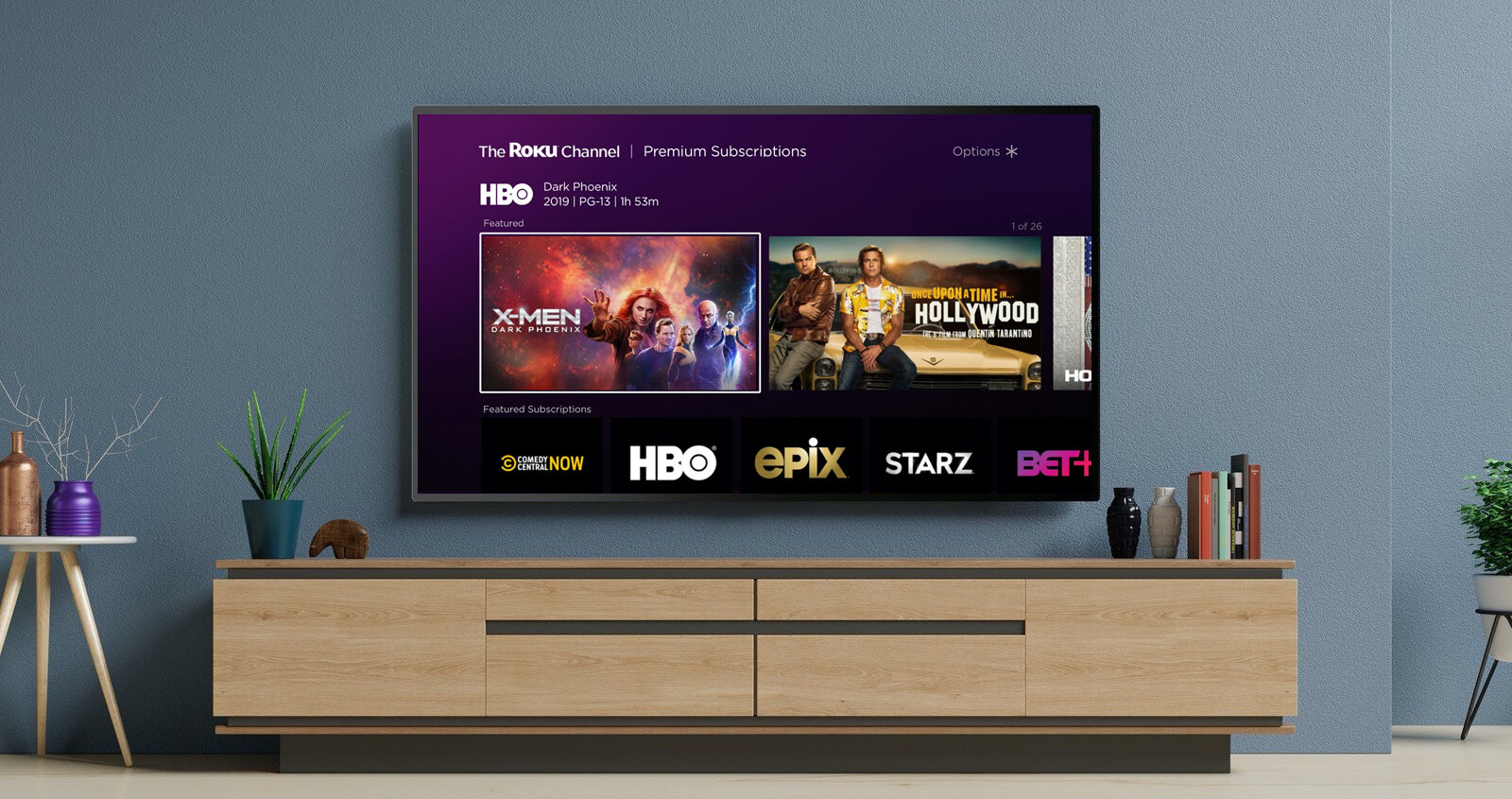Connecting customers to premium entertainment


The Roku Channel is Roku's own and operated video streaming service. The company's first venture into licensing content. The service started off with no subscriptions or fees and offered free TV shows and movies, all ad-supported.
Through user research and consumer insights, customers desired more compelling and diverse content. To extend Roku's mission of connecting customers to the streaming content they love, the company invested in premium subscriptions - increasing value to customers and creating a new revenue stream. My goal was to design a new subscription experience that enables customers to find, access, and purchase their favorite content.
With the content catalog growing significantly from 1k to 100k by adding 25+ subscription partners, it was clear that the current designs could not surface all this new content. We were really constrained on the current designs and this raised many questions:
After a identifying the customers needs and contexts, I identified the tasks across the customers subscription journey. This matrix helped the team understand the scope of new work, highlighted in blue, and a clear path forward.

The first design goal was how can users easily discover subscription content on The Roku Channel home screen? I tried several combinations on how a user can find and browse all the subscription content on app launch. This took many many reviews with Product, Marketing, Monetization, and Engineering teams. There were many discussions around tooling dependencies, how to brand and frame subscription content, and how each concept could impact ad revenue. Collectively we settled on a final direction after prioritizing the user and business impact with effort.
Concept 1: Carousel row of premium subscription partners
The first proposal involved highlighting the most popular or featured subscription add-ons, pinned ten rows down on the home screen in a cold-start case. Each app tile directs the user to the content partners landing page.

Concept 2: App navigation with subscription menu item
This design introduces a navigation menu featuring an item exclusively for subscription content. Other items in the menu such as Home, Live TV, Search, and Categories, offer a combination of ad-supported and subscription content, with a greater emphasis on ad-supported options. As an option, concept 1 can be an add-on to this proposal.

Concept 3: Carousel banner with subscription access point
This changes the home screen design in which a carousel banner component is added above the content grid. One of the carousel items contains a Premium subscription CTA that directs the user to the subscriptions only landing page. As an option, concept 1 can be add-on to this proposal.

As we started honing in on the content organization and patterns, I built a prototype to get alignment. This was to walk stakeholders quickly through the new hierarchy we had talked about. It accounts for things like positioning of the premium subscription row, subscription states, and directional pad navigation on the remote control
Once I felt the direction was clear, I worked with the UX engineering team to build a tv prototype with real partner data for user testing. I project managed the TV prototype within our design team, tracking down API access, working with our UX Engineer and User Researcher to run multiple user studies.
After I got the content browsing experience in a good place, I moved on to the second design goal which was to define the sign up experience. Explored paywall designs that can scale to content partners evolving plans.
After conducting a competitive audit of paywalls in other TV streaming apps, I explored various design approaches, utilizing UI and priming to influence prospects decision-making. These explorations were user tested to understand users pain points, information needed for a confident sign-up decision, and determining the best option for plan comparison.

As we started narrowing on a paywall direction, I built another prototype to show how a user signs up for a subscription. Connecting my paywall designs with the Roku Pay checkout process created by another product designer. This prototype helped drive discussions around content design, legal considerations like appropriate placement for terms and conditions, and whether to include annual plans for launch.
Final Designs
I contributed to the TV design systems by defining new components. Then further flushed out all the design details and edge cases for engineering execution. To support users with visual impairments or blindness, I defined accessibility guidelines for our text-to-speech screen reader on every new screen.


Content partner onboarding
A key part of this project is to ensure our other set of users, content partners were also successful. To help them onboard on The Roku Channel, I collaborated with Marketing, Tooling, and Partner Management teams to define design guidelines for assets required to distribute content partners subscription experiences. The guidelines included asset templates in Figma, as well as delivery instructions found on the Roku’s developers website.
Press
Content partners
Revenue (2019)
Annual revenue boost
With the foundational design in place, Roku plans to carry out ongoing A/B experiments to evaluate various feature combinations. These features include: